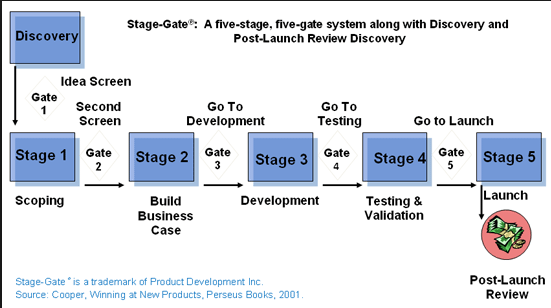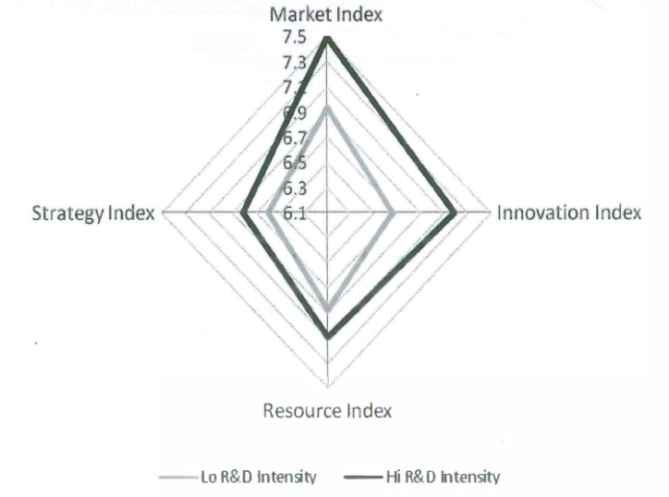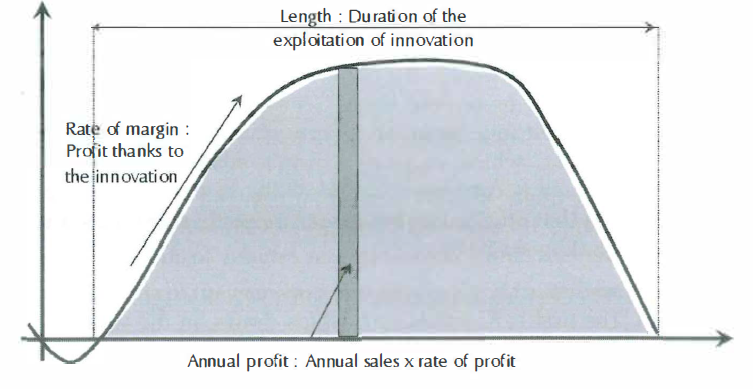Introduction
For many decades, the main technology that was employed at the company was Optical Barcode Reading (OBR). OBR was initially effective and efficient. However, as technology progressed, drawbacks of using the technology started to be experienced, motivating the management at General Steel to explore the possibility of adopting a new technology. With Optical Bar Reading, products can only be identified in terms of the name and manual reading must be done. A new technological innovation which is known as RFID (Radio Frequency Identification) allows products to be tracked up to the point of sale (General Steel Holdings, 2018).
Additionally, data obtained from the supply chain can be shared between departments. RFID also allows for shipment automation, thereby reducing the extensiveness of out-of-stock products. RFID makes it possible for easy writing and reading. Additionally, there is no need for manual reading and each product can be identified independently while reading many products at once. However, in order to implement Radio Frequency Identification, there will be need to invest in acquiring antennae and tags. Also, devices for acquiring and integrating data into a single database should be acquired.
Project Outline
Radio Frequency Identification will be implemented at General Steel as a process that enables selling of products that will be distributed to different parts of the world. Application of the RFID technology will entail information recording in an electronic format on the surface of a tag that is set on the product base. The tag will contain the product code, serial number, and other information that is essential to the product like testing, firmware number, product destination, and cartridge validity.
Reviewing the OBR technology will help to boost the storage approaches at General Steel since problems had started to arise such as wrong inputs using the keyboard for lots that were being shifted from manufacturing sector to storage areas. Additionally, many bar codes were broken making the use of an optical reader to be challenging. Other challenges included the difficulty of locating bunches that had been misplaced, and the tiring nature of manual operations.
Product Evolution and Commercialization
Before implementing any technology, a question that lingers is if there is possibility of enhancing the production speed, and maintain quality in the while avoiding failure. General Steel is advantaged since it already possesses a wide client base. Therefore, the managerial team seeks to improve how processes are conducted along the chain of production.
Suitable Model for implementing the RFID technology
Stage-Gate process
TheStage-Gate is systematic and can be implemented in a step-wise manner when managing a New Product Development process. Additionally, it helps to review the dangers related to implementing a new innovation into the structure of a company. The basis of the Stage-Gate process is critical analysis of how a new innovation can be absorbed at the company level. It also identifies how client needs can be satisfied, prototype generation, and how successful commercialization can be achieved (Cooper, & Edgett, 2009).
Stage Gate Model
Applying the Stage-gate to RFID technology
A varying number of Gates and Stages can be associated with the Stage Gate Development process and this depends on the complexity level of a project.
The major Steps that the RFID technology must be subjected to include;
Developing a project Scope
Detailed information must initially be acquired so as to determine if the RFID technology can successfully be implemented. Scoping should involve an analysis of the financial and technical evaluation related to RFID technology.
Case Development
The stage involves evaluating how RFID technology will allow client identification using the data that has been fed into the system. More importantly, it will ensure that tracking of customer is possible.
Creation, test, validate, & Launch
The RFID technology should be taken through the five steps of the Stage-Gate. At each step, the project is subjected to Go/Destroy/Pause/Re-do analysis based on the KPI’s (Key Performance Indicators) that have been set up by the project implementation team.
Firm Preparedness for the new technology
The Innovation Diamond analysis provides a better overview of the market preparedness for the Radio Frequency Identification technology (Alvarez, & Barney, 2004).
Innovation Diamond Model
Market index
The index helps to analyse client needs and how the RFID technology will live up to the expectations of the wide market base. The RFID technology will improve tracking so as to understand how a product is being used, and the improvements that can be made to favor the client.
Innovation Index
It is based on the premise that the idea at hand will bring maximum success to the organization. At the moment, the Optical Bar Reading technology is not favorable since it leads to misplacement of stock and delays in the production line. RFID technology will eliminate these problems and improve production processes
Resource index
Product commercialization is highly dependent on financial, technical, human, and managerial aspects (Cooper, & Edgett, 2009). The lack of resources when moving from Optical Bar Reading to RFID technology will limit the implementation process, enabling the project to go through all steps of the NDP framework.
Strategy index
It involves an analysis of how competitors, clients, and suppliers are affected by the RFID technology commercialization process. If General Steel’s competitors are still using Optical Bar Reading technology, then the enterprise will be able to gain an upper hand in its supply chain.
The four indices can be assessed based on a scale of 1-5.
Return-risk analysis of the new technological innovation
When assessing an idea that will be implemented over a long period of time, the RENT model should be applied.
- RENT=Volume* Length* Rate.
- Volume- annual sales amount for each financial year
- Length- the expected lifecycle of a concept
- Rate- Expected profit margins
Implementing a new innovation is associated with risk and uncertainty as much as the target is to generate profit. In case the RFID technology it successfully implemented, it will utilized up to a point when the use of such a technology in the supply chain becomes obsolete. Within period that it will be used, it is expected that more target markets will be explored, thereby increasing the number of clients who have access to General Steel products. In the end, profit margins are expected to skyrocket.
RENT Analysis Model
Considerations for RFID Commercialization
An innovation strategy outlines the steps that can be used to execute an idea. Managing the innovation processes should be undertaken rigorously or else the role that an innovation is supposed to play may remain undefined while the revenue gains from the process remain minimal (Mazzarol, & Reboud, 2005). In this report, four factors that should be considered before an innovation commercialized will be analyzed:
Market Readiness
The objective of any business undertaking is to satisfy client needs. Therefore, a suitable way of analyzing market readiness is by looking at factors that affect clients once they have acquired General Steel products.
End user’s role
General Steel will have to conduct critical assessment of how clients and employees will be affected by the availability of RFID tags. The behaviour of these two groups determines the acceptability levels of an innovation.
Gaps in the industry
General Steel should focus on addressing needs that other organizations have failed to capture. As a result, it will create a unique market niche within which it can distribute its products, thereby becoming a major market player within that segment.
Opposition from existing Steel Manufacturing Companies
General Steel is a well established market player in the Asian Market. Therefore, it will be hard to encounter opposition from other major steel manufacturing companies when adopting the RFID technology. Hence, the company will have an upper hand once it implements the RFID technology.
RFID Evaluation at General Steel
The research suggests using a suitable framework that would support the full life cycle of the RFID innovation. In this case, the suggestion for combining both incremental and radical innovation is seen as most preferable because incremental helps to sustain the competitive capabilities of an organization while radical innovation helps in the creation of the competition.
Incremental innovation helps to support the long term objectives of a company since it creates room for better competitive advantage while reducing the overall cost of the project, and ensuring that there is extreme collaboration throughout the New Product Development Life Cycle (Kumar & Kumar, 2018). The choice to take up an innovation normally leads to numerous alterations being taken up in the organizations structure. At General Steel, a proper road map has been provided by innovation champions and the task of ensuring the RFID technology is fully implemented is left to the champions of innovation.
Discussion on findings and analysis
A company’s products and ideas are normally faced with a short time span and they can easily be replaced with other innovative ideas from competitors. New ideas can be challenged when they are being implemented to the point that they end up failing, and they can also succeed and become great projects that will be emulated by other companies. An analysis of General Steel shows that the organization has been able to transcend international borders hence establishing it-self as a manufacturing powerhouse.
New Product development and commercialization is associated with different aspects, which ensure that the product can swiftly be embraced by the society (Kumar & Kumar, 2018). As the new technology continues to be actualized at General Steel, it should be rigorously tested so as to assess the efficiency that it brings forth.
The different steps that a concept passes through are meant to determine its overall viability. Combining different innovation approaches will ensure that General Steel is able to secure a better platform for advancing its commercial activities (Ettlie, Bridges, & O’keefe, 1984).
Conclusion
The adoption of new technologies allows a company to become more competitive. Based on different research undertakings, it is evident that a new innovation creates room for improved productivity. Implementing the RFID technology at General Steel will ensure that the storage and retrieval process within warehouses is efficient. More importantly, it will be possible to track a product up to the end user. With such advantages in the offing, it is critical that a suitable model is used during the implementation process. In the end, evaluation of the technology should be done to show how it will affect the company on a long term basis. The evaluation also helps to prevent full implementation of solutions which might lead to business failure as a result of financial wastage on a venture that does not augur well with the continuity of General Steel.
References
Ettlie, J. E., Bridges, W. P., & O’keefe, R. D. (1984). Organization strategy and structural differences for radical versus incremental innovation. Management science, 30(6), 682- 695.
Mazzarol, T., & Reboud, S. (2005). Customers as predictors of rent returns to innovation in small firms: an exploratory study. International Journal of Entrepreneurship and Innovation Management, 5(5-6), 483-494.
Alvarez, S. A., & Barney, J. B. (2004). Organizing rent generation and appropriation: toward a theory of the entrepreneurial firm. Journal of Business Venturing, 19(5), 621-635.
Cooper, R. G., & Edgett, S. J. (2009). Product innovation and technology strategy. Stage-Gate International.
General Steel Holdings, I. (2018). General Steel’s JV Signs Letter of Intent to Deploy RFID-b based Logistics Management at Tewoo Group’s Seven Steel Coils Logistic C Centers. Prnewswire.com. Retrieved 19 April 2018, from h https://www.prnewswire.com/news-releases/general-steels-jv-signs-letter-of-intent-to-d deploy-rfid-based-logistics-management-at-tewoo-groups-seven-steel-coils-logistic-c centers-300099727.html
Kumar, N., & Kumar, N. (2018). Why companies should strike a balance between radical and Incremental innovation. Scroll.in. Retrieved 18 April 2018, from h https://scroll.in/article/811035/why-companies-should-strike-a-balance-between-radical- and-incremental-innovation
Appendix
Results of the Innovation Diamond
Market Index-9
Resource Index-10
Innovation Index-9
Strategy Index-12
Analysis of Return-risk
Rent Score Calculation
Volume-Q.7 (4) +Q.8 (5) +Q.9 (3)= 12
Rate- Q.10 (3) +Q.11 (3) +Q.12 (3)= 9
Length-Q.13 (3) +Q.14 (4) +Q.15 (5)= 12
The RENT for the innovation can be plotted on the following table.
Volume is- (>7) ++
Rate is- (>7) ++
Length is- (>7) ++
The content marketing strategy applies to the Champion RENT configuration.
Executive summary
Generally, enterprises lack human, structural, or financial resources that can be employed in the process of implementing a new innovation. The research has critically evaluated a model for innovation that can be implemented in at General Steel, to ensure that the adoption of RFID technology is a success. For a firm to become competitively advanced, the decisions that will be made in the process of implementing the new innovation depends upon risk and the overall value that can be acquired from the endeavor. In this case, an innovation solution may bring forth esthetic, technical, or functional benefits. General Steel will benefit in numerous ways as a result of taking up the RFID technology. However, all this depends on the process that will be associated with the NDP.










